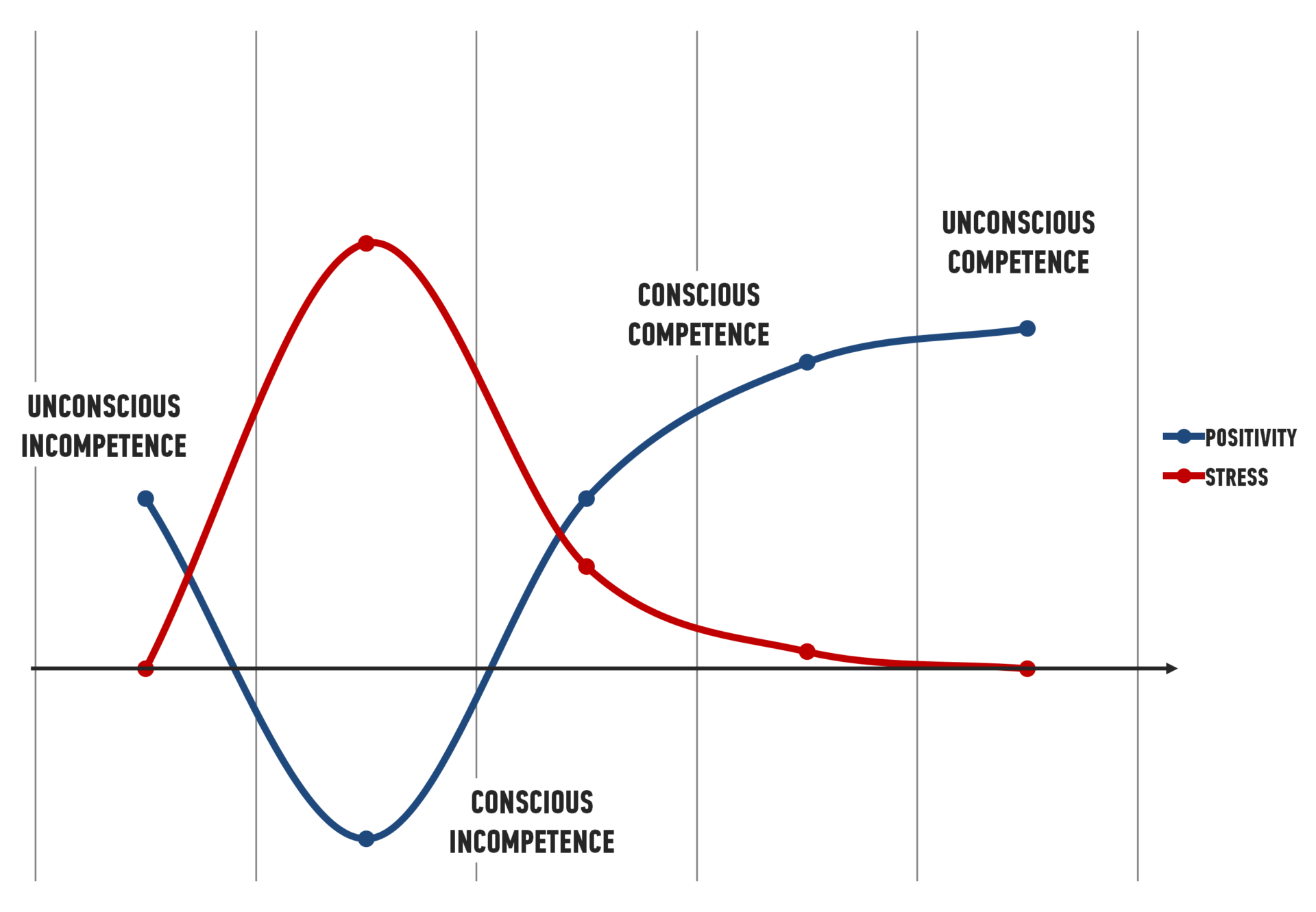
PRODUCTHEAD: Becoming a product leader
PRODUCTHEAD is a regular newsletter of product management goodness,
curated by Jock Busuttil.
hail to the product
tl;dr
To build trust, mutual respect and transparency are critical
Becoming a product leader means letting go of the day-to-day product management
Being good at your job means training others to be good at theirs
Equip your team to make good choices without needing your input
Developing people is the single most important part of your job
a favour: please share this with other product people
every PRODUCTHEAD edition is online for you to refer back to
hello
My first attempt at managing someone was doomed to fail. And it did — spectacularly.
It was my first job after graduating, and I’d joined a startup just before its adolescent growth spurt. Barely a year into the job, we’d moved into a huge office and were attempting to treble the size of the company. Suddenly I had a direct report.
At the time I barely knew how to manage myself, let alone someone else. On reflection, among the many mistakes I made, I think one of the most cringeworthy was to assume that this new person would know everything on day one.
“The curse of knowledge is a cognitive bias that occurs when an individual, who is communicating with other individuals, assumes they have the background knowledge to understand.”
https://en.wikipedia.org/wiki/Curse_of_knowledge
All the things I’d learned at the startup over the course of the previous year — it never once crossed my mind that other people wouldn’t know this stuff too. (Like I said, total cringe.) So I just jumped right into delegation mode and was mystified why this poor person was struggling to get anything done.
Soon after, the dotcom bubble burst and our company shrunk back in size to smaller than we’d been before. This was probably a small mercy for all concerned as it put an abrupt end to my first foray into managing.
Some years later, I came across a useful concept called situational leadership, developed by Paul Hersey and Ken Blanchard.
To summarise, they outline four types of leadership style ranging from being directive through to delegation. The twist is that you have to match the leadership style with the level of capability and motivation of the person for that particular task.

1. Unconscious incompetence: Also known as the Woohoo stage. At this point you’ll be saying to yourself, “Of course I can do this, I’ve done [insert completely unrelated activity here] before, so this can’t be that hard, right?” Enthusiasm will be high and stress will often manifest as “butterflies” in the stomach.
Leadership approach: be directive — tell them what to do and how, then check their working.
2. Conscious incompetence: Also known as the Ice-Cubes-Down-the-Back Wake‑Up Call or the Trough of Realism, in which enthusiasm plummets and stress rockets. At this stage, you’re thinking that the job is a lot harder than you envisaged, you’re not entirely sure why you decided to do it in the first place, and you’re seriously considering handing back the scalpel/hazmat gear/riding crop and saying you’re probably not qualified to do the task. This is where you show your true colours— if you can knuckle down and persevere, you will start to improve. Don’t listen to the voices in your head telling you to give up.
Leadership approach: be more of a cheerleader to encourage them to move past their inevitable screw-ups. Can you soften the landing when they fall over?
3. Conscious competence: Also known as the I’m Getting the Hang of This stage. You’re beginning to master the new skill, the bruises are no longer showing, and the various lawsuits have died down. You still have to think about how to do the task right, but it’s getting easier every time, so your enthusiasm and stress levels are stabilizing.
Leadership approach: coaching — they know what they’re meant to be doing, but they’re perhaps not doing it as consistently as they want to, which can itself be frustrating for them.
4. Unconscious competence: Also known as the Look Ma, No Hands! stage— minimal stress, maximum enthusiasm. This is where you don’t really have to think about the task any more; you feel how to do it, like a Zen master. You can slow down time and dodge bullets, but it’s still advisable to look where you’re going to avoid it becoming the Look Ma, No Teeth! stage.
Leadership approach: delegate — set them the goal, and let them use their expertise to get on with it. Provide support when they need it.
Adapted from my book, The Practitioner’s Guide To Product Management, in which you can read more about my epic leadership fails.
The move from individual contributor product manager to team leader can take you by surprise if you’re not prepared for the new set of challenges. To help you make the switch hopefully more elegantly than my first attempt, I’ve pulled together some more great content for you.
Speak to you soon,
Jock
what to think about this week
Establishing trusted relationships
Trusted relationships are critical, in every profession and in every walk of life. In my latest book “Managing Product = Managing Tension” I go into the detail of four key ways in which we can both create and maintain trusted relationships: influencing without authority, shared goals, transparency and psychological safety.
Share goals, work transparently
[MARC ABRAHAM / MEDIUM]
Tips for becoming a head of product
Becoming a head of product and managing a group of product people is a significant career step. In this article, I share my recommendations to help you get ready for the new job and be off to a great start.
Look after people, not products
[ROMAN PICHLER]
Product Management Coaching
Whether you’re new to product management or have been a product manager for years, a coaching session can help you to step up your career.
We’ve coached people wanting to get into product management, product people with nobody in their organisation to manage them, and experienced product managers preparing to apply for a promotion.
We can help you prepare for your product manager interview, including mock interviews.
“Jock has been instrumental in my personal growth as a product leader but also as a person.”

Ludovic Lacay
Co-founder & Chief Product Officer, Napo
A proportion of the fees from every coaching session is donated to charity. Just reply to this email if you’re interested in finding out more.
Crossing the canyon: product manager to product leader
There’s a hidden trap right in the middle of the PM career ladder where many of the brightest PMs fail — we’ve seen numerous careers stall at the transition from Senior Product Manager to a Product Leader (sometimes referred to as a Group Product Manager, Dir of Product, or Product Lead). Let’s explore why this is the most difficult career transition for PMs.
What got you here, won’t get you there
[FAREED MOSAVAT & CASEY WINTERS / REFORGE]
Delegation for product leaders
Different execs have different POVs, so I should share my bias. My stated goal as a product leader is to delegate as much direct product management work as possible to my team, both operational and strategic, so that I can do the organizational and process work to make my overall team more successful.
Help the team make defensibly good choices
[RICH MIRONOV]
The coaching mindset
A coaching mindset provides a foundation of intent. It is the framing that directs your application of coaching techniques, and your guiding principle for taking action and making decisions around developing a team.
Create missionaries, not mercenaries
[CHRIS JONES / SILICON VALLEY PRODUCT GROUP]
recent posts
The unifying principles of product management
A recent tweet by John Cutler provoked some interesting reactions. It got me thinking about whether there are unifying principles of product management that apply in all contexts.
[I MANAGE PRODUCTS]
What to do when service transformation goes wrong
When companies set out to improve a service or redesign a product, the results can sometimes be underwhelming. Instead of delivering service transformation, the team recommends only minor efficiency tweaks. If this has been happening to you, there can be many underlying causes. I’ve identified a few common problems and what you can you do about them.
Change means doing things differently, not just a rebrand
[I MANAGE PRODUCTS]
The neverending quest for product-market fit
Often the biggest barrier to your product’s widespread adoption is going to be whether it reaches product-market fit early on. Even if you do, you’re wrong if you think you never need to worry about product-market fit again.
[I MANAGE PRODUCTS]
upcoming talks and events
I’ve spoken at various product management and technology conferences around the world. I share ideas primarily on the topic of product management, and this tends to overlap with agile and ethical product development, digital transformation, and fostering healthy product cultures and communities.
“Day 2 saw an impressive presentation by Jock Busuttil on user testing. He asked the attendees to lend each other a smartphone and take a picture. What a turmoil that caused ;-) ”

Walter Schärer
Marketing & Business Development Director, BlueGlass Interactive
If you’d like to book me to speak at your event, please get in touch.
can we help you?
Product People is a product management services company. We can help you through consultancy, training and coaching. Just contact us if you need our help!
Helping people build better products, more successfully, since 2012.
PRODUCTHEAD is a newsletter for product people of all varieties, and is lovingly crafted from a bucket-load of cringe.


Leave a Reply